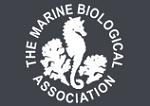APHOTOMARINE
An educational resource dedicated mainly to the photography
and diversity of marine life that can be found in coastal waters
and intertidal areas of Great Britain and Ireland by David Fenwick.

Taurulus bubalis
- in aquarium 1
Long-spinned sea scorpion
Taurulus bubalis
- in aquarium 2
Long-spinned sea scorpion
Taurulus bubalis
- in aquarium 3
Long-spinned sea scorpion
Taurulus bubalis
- in aquarium 4
Long-spinned sea scorpion
Taurulus bubalis
- side view 1
Long-spinned sea scorpion
Taurulus bubalis
- side view 2
Long-spinned sea scorpion
Taurulus bubalis
- side view 3
Long-spinned sea scorpion
Taurulus bubalis
- side view 4
Long-spinned sea scorpion
Taurulus bubalis
- side view / mating colour 1
Long-spinned sea scorpion
Taurulus bubalis
- head / side view / close-up 1
Long-spinned sea scorpion
Taurulus bubalis
- face view 1
Long-spinned sea scorpion
Taurulus bubalis
- face view 2
Long-spinned sea scorpion
Taurulus bubalis
- face view 3
Long-spinned sea scorpion
Taurulus bubalis
- dorsal view 1
Long-spinned sea scorpion
Taurulus bubalis
- in pool / camouflaged 1
Long-spinned sea scorpion
Taurulus bubalis
- underside 1
Long-spinned sea scorpion
Taurulus bubalis
- eggs close-up 1
Long-spinned sea scorpion
Taurulus bubalis
- eggs close-up 2
Long-spinned sea scorpion
Taurulus bubalis
- eggs 1
Long-spinned sea scorpion
Taurulus bubalis
- eggs 2
Long-spinned sea scorpion
Taurulus bubalis
- eggs 3
Long-spinned sea scorpion
Taurulus bubalis
- eggs 4
Long-spinned sea scorpion
Taurulus bubalis
- eggs 5
Long-spinned sea scorpion
Taurulus bubalis
- eggs 6
A common rockpool fish which is very variable in colour due to its ability to camouflage itself. Images taken at various locations across Devon and Cornwall; these incude Batten Beach and Devil's Point, Plymouth, Devon; and at Spit Point, Par; Marazion and Battery Rocks near Penzance, Cornwall. This species is also frequently caught by sea anglers, probably due to the size of its very large mouth. Despite its fearsome look, it is not poisonous and quite safe to handle.
Gnathia pranzina have been found feeding on the surface of Long-spinned sea scorpion (Tarulus bubalis) at Chimney Rocks, Penzance, Cornwall on a number of occasions.
A marine leech Oceanobdella microstoma has also been found under the head on a number of Long-spinned sea scorpion at Chimney Rocks, Penzance. The species is also commonly called the Long-spined bullhead, indeed the authors father who was from Grimsby simply referred to this species as Bullhead, but we must not confuse this species with a species known as the European bullhead, Cottus gobio.
APHOTOMARINE supports open source data recording and sharing for the benefit of wildlife, recorders, research, science and education. The project recommends the following websites and works with the following bodies and organisations.
The Marine Biological Association or MBA, based in Plymouth, is one of the world’s longest-running societies dedicated to promoting research into our oceans and the life they support. Since 1884 the MBA has been providing a unified, clear, independent voice on behalf of the marine biological community.It has a growing membership in over 40 countries.
The National Biodiversity Network or NBN is a charity that supports open source data sharing and recording supporting conservation, science and education. "Why do recorders need open source?". Simply because it supports the core values of wildlife recording and the free use of records and data over a very wide network that includes partners like the Natural History Museum.
The taxonomy used here is based on that of the following database, which is also used by the MBA, NHM and the NBN.
The World Register of Marine Species or WoRMS.

